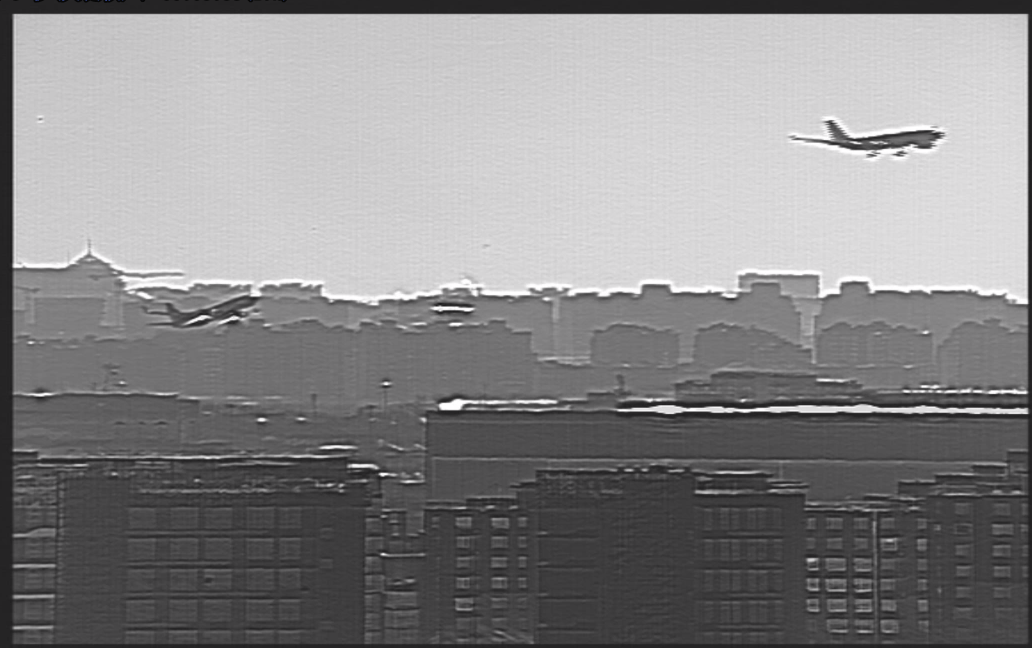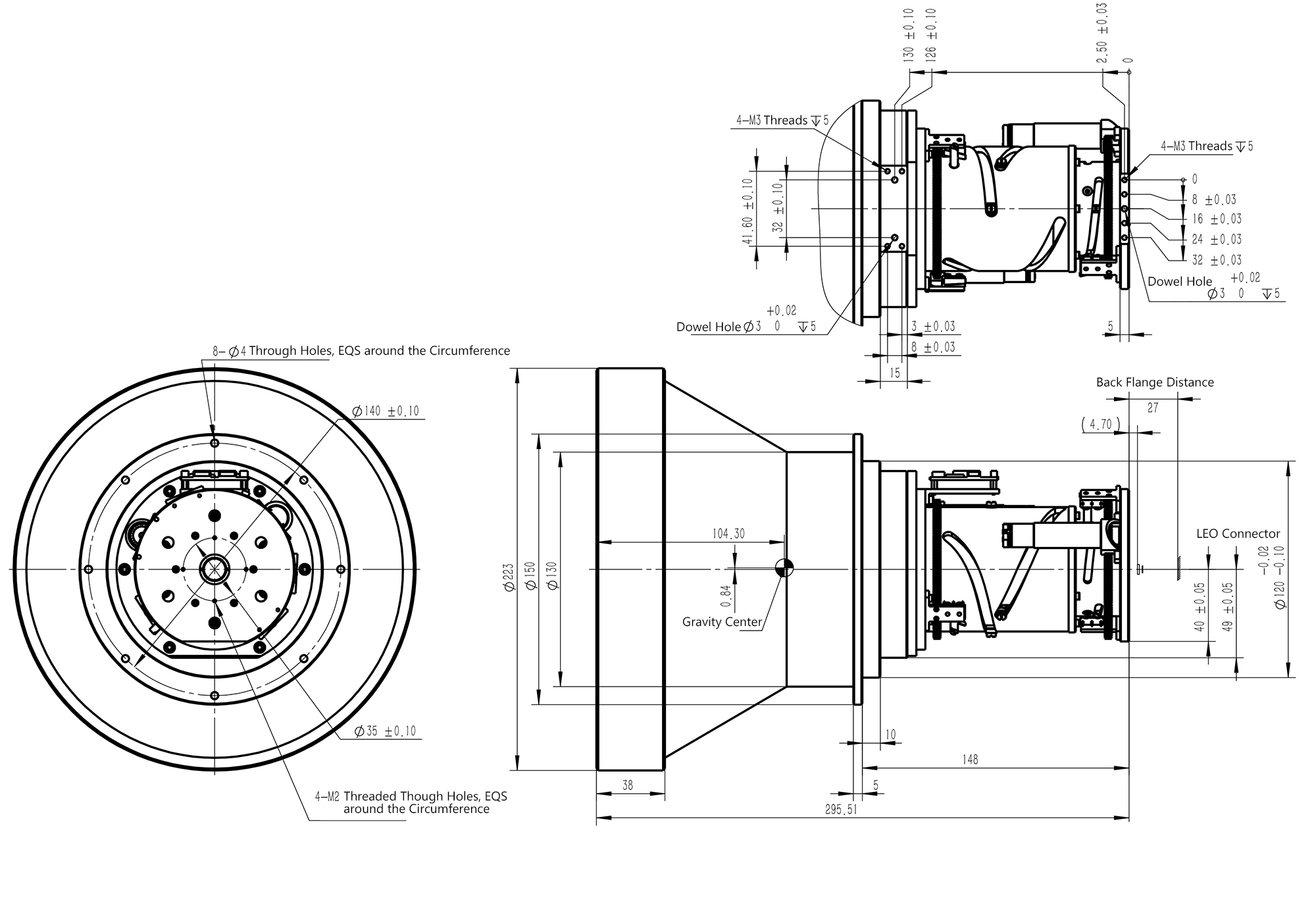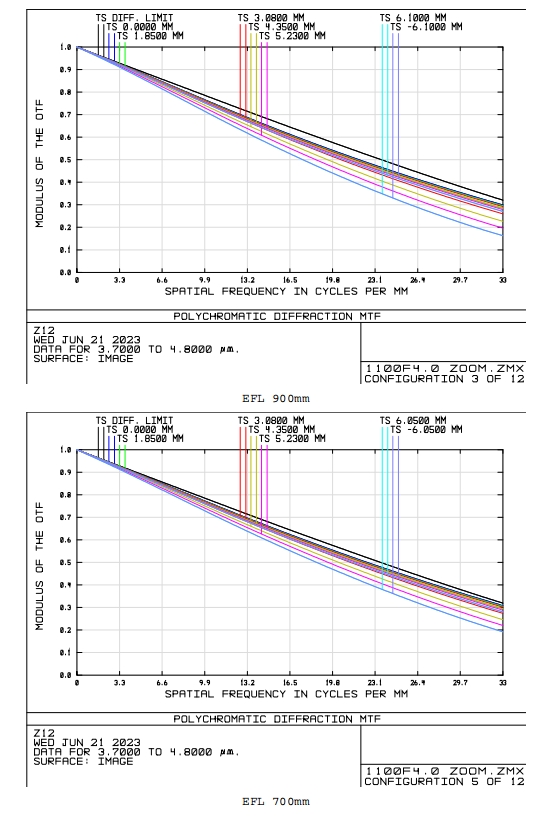Long Range Infrared Lenses
Introduction:
The increasing applications of long-range infrared (IR) lenses, particularly in the fields of drones and surveillance, have fueled a demand for cutting-edge technology that can deliver enhanced detection capabilities over extended distances. This article explores the critical requirements, considerations, and advancements in long-range infrared lens technology, focusing on the simplification of optical systems, meeting Size, Weight, and Power (SWaP) limits, ensuring resilience in extreme environments, and achieving remarkable detection distances.
The Surging Demands of Long Range Infrared Lens:
Applications in Drones:
Long-range infrared lenses are indispensable components in drones, enabling these unmanned aerial vehicles to conduct surveillance, reconnaissance, and other critical missions from safe distances. These lenses empower drones with the capability to capture thermal data from significant altitudes, facilitating more comprehensive and efficient data collection, which is essential for effective and efficient drone operations, such as monitoring large agricultural fields, conducting efficient search and rescue operations, and enhancing overall situational awareness.
Enhanced Surveillance:
In the realm of surveillance, the demand for long-range infrared lenses has surged due to the need for heightened security measures and more effective monitoring systems. Surveillance operations, whether in urban environments, border control, or critical infrastructure protection, benefit immensely from the extended reach and enhanced visibility provided by long-range IR lenses. The ability to detect and identify objects, people, or activities over extensive areas, especially during low-light conditions, significantly improves the overall effectiveness of surveillance systems.
The Critical Requirements for Long-range Infrared Lenses
The critical requirements for long-range infrared lenses are multifaceted, encompassing aspects that are crucial for optimal performance in various applications. As the demand for these lenses continues to surge, meeting these requirements becomes imperative to ensure reliability, efficiency, and adaptability to diverse environments. The key critical requirements include:
1. Simplification of the Optical System:
Importance:
A simplified optical system is essential for minimizing complexity, reducing potential points of failure, and enhancing overall reliability.
Simplification facilitates easier maintenance and reduces the risk of malfunctions during operation.
Considerations:
Optical Design Efficiency: Utilizing advanced optical designs that achieve high performance while minimizing the number of elements in the lens system.
Reduced Aberrations: Minimizing optical aberrations to maintain image quality and clarity over long distances.
2. SWaP (Size, Weight, and Power) Limits:
Importance:
Long-range infrared lenses often find applications in constrained environments, such as on drones, where payload weight, physical dimensions, and power consumption are critical factors.
Adhering to SWaP limits is crucial for maintaining drone endurance, maneuverability, and overall operational efficiency.
Considerations:
Lightweight Materials: Incorporating lightweight yet durable materials for lens construction to minimize overall weight.
Compact Designs: Designing lenses with compact form factors to fit within the limited space constraints of drone payloads.
Energy-Efficient Systems: Utilizing energy-efficient components to optimize power consumption, extending drone flight times.
3. Resistance to Extreme Environments:
Importance:
Long-range infrared lenses are often deployed in challenging conditions, including extreme temperatures, humidity, and exposure to various weather elements.
Resistance to environmental factors ensures the lenses' reliability and longevity in demanding scenarios.
Considerations:
Weather Sealing: Implementing effective weather sealing to protect the lens internals from moisture, dust, and other environmental elements.
Temperature Tolerance: Using materials that can withstand a wide range of temperatures, ensuring reliable performance in diverse climates.
Corrosion Resistance: Employing corrosion-resistant coatings to safeguard against environmental degradation.
4. Detection Distance:
Importance:
The primary purpose of long-range infrared lenses is to extend the detection distance, providing a clear and detailed view of objects or scenes from afar.
Achieving remarkable detection distances is critical for applications like surveillance, reconnaissance, and monitoring.
Considerations:
Optimized Focal Lengths: Selecting and optimizing focal lengths to maximize the lens's reach without compromising image quality.
Continuous Zoom Capabilities: Incorporating continuous zoom capabilities to dynamically adjust the focal length for various distances.
Advanced Technologies: Leveraging advancements in lens technologies to enhance the lens's overall performance and extend detection capabilities.

Figure 1. Long Range Infrared Zoom Lens from Shalom EO
Considerations When Designing and Selecting the Lens:
Focal Length and Zoom Capability:
The selection of an appropriate focal length and the integration of infrared zoom capabilities are critical factors in designing long-range IR lenses. This ensures adaptability to various scenarios, allowing users to zoom in on specific targets or scan large areas as needed.
Optical Coatings:
The choice of optical coatings influences the lens's performance in terms of image quality, light transmission, and resistance to environmental factors. Anti-reflective coatings, in particular, play a significant role in minimizing glare and maximizing infrared transmission.
Materials and Construction:
Optimal material selection and construction techniques are crucial for ensuring the durability and longevity of long-range infrared lenses. Materials resistant to temperature fluctuations, corrosive elements, and physical impact contribute to the lens's overall reliability.
Long-Range IR Continuous Zoom Lens
The development and integration of Long-Range Infrared (IR) Continuous Zoom Lenses mark a significant advancement in optical technology, offering unprecedented flexibility and adaptability in applications ranging from surveillance to remote sensing. This innovation addresses the need for real-time adjustment of focal length, allowing operators to seamlessly transition between wide-angle and telephoto views without compromising image quality. This article explores the features, benefits, and considerations associated with Long-Range IR Continuous Zoom Lenses.
Features:
Dynamic Focal Length Adjustment:
Continuous zoom functionality enables operators to adjust the focal length smoothly and continuously.
Provides the ability to zoom in and out without preset steps, allowing for precise control over the field of view.
Enhanced Operational Versatility:
Well-suited for dynamic scenarios where surveillance or monitoring conditions may change rapidly.
Ideal for applications such as aerial reconnaissance, border control, and critical infrastructure protection.
Improved Target Tracking:
Enables operators to maintain focus on moving targets without the need for manual adjustments.
Enhances the lens's capability to track objects across varying distances in real-time.
Optical Image Stabilization:
Some Long-Range IR Continuous Zoom Lenses incorporate optical image stabilization technologies to counteract vibrations and movements, ensuring stable and clear imagery.
Adaptable to Changing Environmental Conditions:
Facilitates quick adjustments to varying visibility conditions, such as changes in atmospheric conditions or lighting.
Enhances the lens's ability to capture clear thermal images over long distances, even in challenging environments.
Benefits:
Increased Situational Awareness:
Continuous zoom capability enhances operators' situational awareness by allowing them to adapt to evolving scenarios in real-time.
Provides a comprehensive view of the surroundings without the need to switch lenses or interrupt operations.
Optimized Detection Range:
Long-Range IR Continuous Zoom Lenses extend the detection range by offering variable focal lengths.
Enables users to zoom in for detailed inspections or zoom out for wide-area surveillance without compromising the overall system's performance.
Reduced Equipment Payload:
Combining continuous zoom capabilities within a single lens reduces the need for multiple lenses with fixed focal lengths.
Optimizes payload capacity, making it particularly advantageous for applications with strict Size, Weight, and Power (SWaP) constraints, such as drone-based surveillance.
Shalom EO’s Long Range Thermal Imaging Lenses
As the demand for long-range infrared lenses continues to surge, the technology behind these lenses must evolve to meet the diverse and challenging requirements of applications such as drones and surveillance. Achieving simplified optical systems, adhering to SWaP limits, ensuring resilience in extreme environments, and pushing the boundaries of detection distances are paramount in advancing long-range infrared lens solutions.

Figure 3. The picture captured by Shalom EO's 90mm to 1100mm f/5.5 Continuous Zoom MWIR Thermal Camera Lenses For Cooled Detectors at the detection range of 15km

Figure 4. The picture captured by Shalom EO's 90mm to 1100mm f/5.5 Continuous Zoom MWIR Thermal Camera Lenses For Cooled Detectors at the detection range of 35km
Figure 3 and Figure 4 are the pictures captured by Shalom EO’s 90mm to 1100mm f/5.5 Continuous Zoom MWIR Thermal Camera Lenses For Cooled Detectors. The lens assembly features a surpassing detection distance of 35km at maximum, as shown in Figure 4, the sight remains clean and crisp. Step into the future of surveillance with a 35km detection range. Our thermal camera lenses push the boundaries, providing you with an extensive coverage area that's perfect for large-scale installations, border security, and critical infrastructure protection.
Our thermal camera lenses find applications in various fields. Achieve optimal results in all scenarios with lenses that adapt to your requirements, ensuring that you never miss a critical detail.

Figure 2. The Drawing of Shalom EO's 90mm to 1100mm f/5.5 Continuous Zoom MWIR Thermal Camera Lenses For Cooled Detectors
Figure 5 describes the MTF curves for the long-range detection lens module, as shown in the figure, both the sagittal and tangential MTF of the lens module are close to the diffraction limit.

Figure 5. The MTF Curve of Shalom EO's 90mm to 1100mm f/5.5 Continuous Zoom MWIR Thermal Camera Lenses For Cooled Detectors
Shalom EO is a professional supplier of long-range infrared zoom lenses. With MTF close to the diffraction limit, flexible zooming mechanism, large apertures, and excellent DRI capability, these lenses enhance overall operational capabilities, delivering clean crisp images and exhibiting reliable performance under extreme weather conditions, while also boasting lightweight design, large apertures, and long detecting distance. Our expert engineers are confident to present innovative designs tailored to your needs.
Related Articles
Tags: Long Range Infrared Lenses

